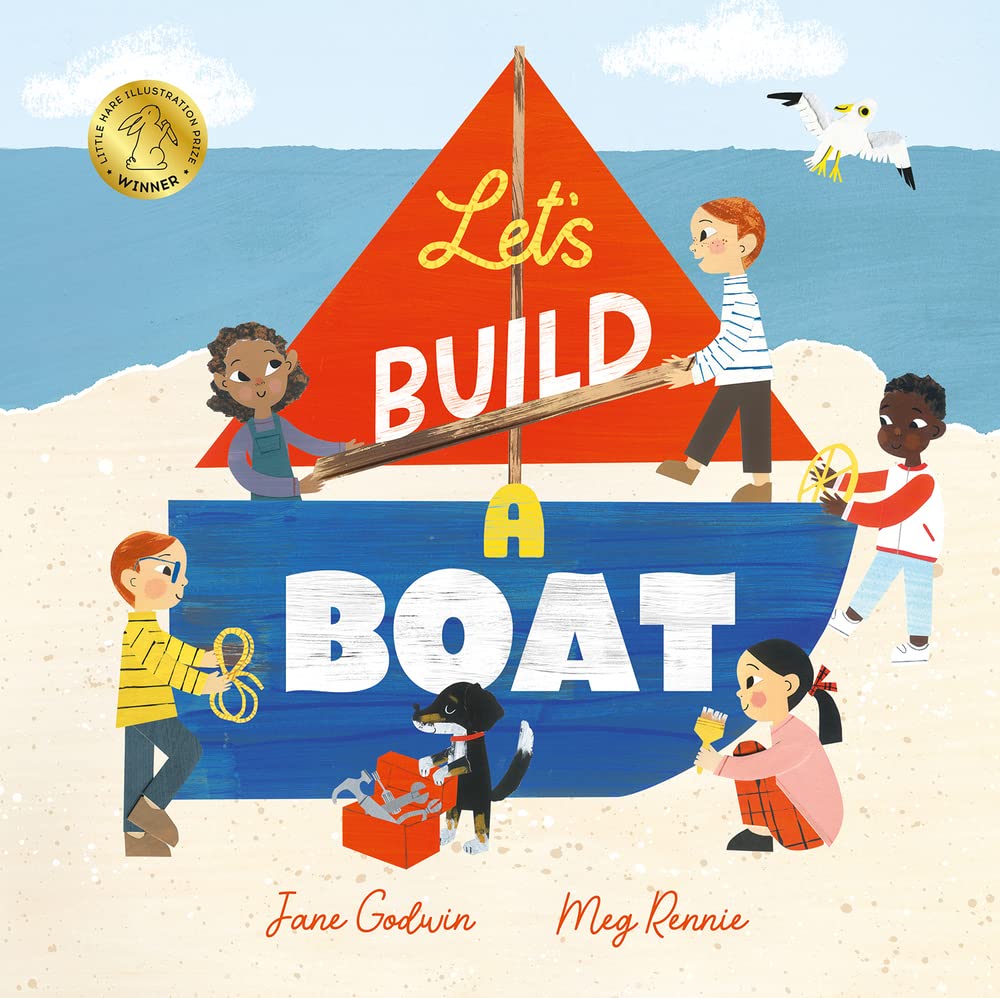Year 2
Children’s Picture Books and Activities Aligned with the Australian Curriculum for Year 2
This section offers a collection of children’s books, learning activities, and lessons designed for Year 2 students (age 7), all aligned with the Australian Curriculum. You’ll find resources across key learning areas including English, Mathematics, Science, Design and Technologies, Humanities and Social Sciences (HaSS), and Health and Physical Education.
Perfect for teachers and parents, these materials help Year 2 learners strengthen their understanding through rich texts, practical problem-solving, and creative exploration.
If you’re teaching a composite class or searching by theme or topic, we recommend visiting our Subject section for easier filtering across year levels.
-
Reading Skills for Early Years Students
By the end of Year 2, students develop key reading skills that support comprehension and fluency. Explore these skills and how they help foster these abilities.
-
The Shouting Girl
Written by Steven Huynh
Illustrated by Gehenna Pham
Published by Steven De GC
Theme/topic: Emotion recognition, Emotional regulation, Inclusion, Recount, Rhyme, and Vocabulary expansion
The story follows a young girl who struggles to express herself calmly, often shouting when she feels frustrated or unheard. Through her journey, she learns to recognise and understand her emotions (AC9HPFP03, AC9HP2P03 – Foundation to Year 2, Health and Physical Education) and works to develop positive strategies for expressing her thoughts and feelings in respectful ways (AC9HPFP02, AC9HP2P02 – Foundation to Year 2, Health and Physical Education).
The story also encourages children to explore characters’ perspectives and emotional responses, fostering empathy (AC9HP2P01 – Health and Physical Education, Years 1 and 2). It helps them define safe and unsafe environments, such as calm corners, through interactions with friends in a classroom, establishing help-seeking strategies in such situations (AC9HP2P05 – Health and Physical Education, Years 1 and 2).
With its poetic language and engaging illustrations, The Shouting Girl helps students understand how rhyme and rhythm create cohesion in a text. It also explores how words and images shape settings and characters, along with other literary features such as lists of three and similes.
AC9E1LA04 (English Language and Literacy – Year 1) AC9E2LE03 (English Language and Literacy – Year 2) AC9E2LE04 (English Language and Literacy – Year 2) AC9HP2P01 (Health and Physical Education – Year 1, Year 2) AC9HP2P02 (Health and Physical Education – Year 1, Year 2) AC9HP2P03 (Health and Physical Education – Year 1, Year 2) AC9HP2P05 (Health and Physical Education – Year 1, Year 2) AC9HPFP02 (Health and Physical Education – Foundation) AC9HPFP03 (Health and Physical Education – Foundation)Selecting Quality Texts for Effective Early Year Reading
Learn how to select quality texts for early year literacy. Explore engagement factors and literary elements to enhance your planning.
What is Talk For Reading and Why Talk For Reading?
Discover how Talk For Reading enhances early childhood literacy through storytelling, discussion, and hands-on learning in Foundation to Year 2 Australian classrooms.
Stay for Dinner’s Cultural Diversity Story from a Teaching Perspective
Discover Stay for Dinner, a multicultural children’s book celebrating diversity. See how it aligns with the Australian Curriculum for Years 1 and 2!
[T4R] Stay For Dinner Reading Unit for Year 2
📔 Stay For Dinner by Sandhya ParappukkaranAC9E2LA02 (English Language and Literacy – Year 2) AC9E2LA03 (English Language and Literacy – Year 2) AC9E2LA08 (English Language and Literacy – Year 2) AC9E2LA09 (English Language and Literacy – Year 2) AC9E2LE02 (English Language and Literacy – Year 2) AC9E2LE03 (English Language and Literacy – Year 2) AC9E2LY02 (English Language and Literacy – Year 2) AC9E2LY04 (English Language and Literacy – Year 2) AC9E2LY05 (English Language and Literacy – Year 2) AC9E2LY06 (English Language and Literacy – Year 2) AC9E2LY07 (English Language and Literacy – Year 2) AC9HP2P01 (Health and Physical Education – Year 1, Year 2) AC9HP2P02 (Health and Physical Education – Year 1, Year 2) AC9HP2P03 (Health and Physical Education – Year 1, Year 2)[T4R] Stay For Dinner: L10 Evaluation
📔 Stay For Dinner by Sandhya Parappukkaran• We are learning to reflect on the text.
[T4R] Stay For Dinner: L8 Respectful Relationships
📔 Stay For Dinner by Sandhya Parappukkaran• We are learning to make conscious choices to build respectful relationships.
[T4R] Stay For Dinner: L7 Cultural Respect
📔 Stay For Dinner by Sandhya Parappukkaran• We are learning to look deeper into the images of the story.
[T4R] Stay For Dinner: L6 The Message
📔 Stay For Dinner by Sandhya Parappukkaran• We are learning to use dialogic talk to deepen our understanding of the text.
[T4R] Stay For Dinner: L5 Vocabulary
📔 Stay For Dinner by Sandhya Parappukkaran• We are learning the meaning of unknown words in context.
[T4R] Stay For Dinner: L4 Literal Retrieval
📔 Stay For Dinner by Sandhya Parappukkaran• We are learning to retrieve literal information from the text.
[T4R] Stay For Dinner: L2 Making Predictions
📔 Stay For Dinner by Sandhya Parappukkaran• We are learning to make predictions about the text.
[T4R] Stay For Dinner: L1 Background Knowledge
📔 Stay For Dinner by Sandhya Parappukkaran• We are building our background knowledge to help us comprehend a text.
One Is a Snail, Ten Is a Crab
Written by April Pulley Sayre and Jeffrey Sayre
Illustrated by Randy Cecil
Published by Walker Books
Theme/topic: Addition, Comparison, Counting, Grouping, and Repeated addition
This delightful and imaginative book introduces young readers to counting (ACMNA001, AC9MFN01 – Foundation Year, Mathematics) and basic multiplication concepts. By using the number of feet on various animals, the story encourages children to explore basic counting with feet (ACMNA002 – Foundation Year, Mathematics) and repeated addition, grouping, and arrays to represent numbers. This creative approach not only reinforces counting skills but also provides a playful foundation for understanding multiplication (ACMNA031 – Year 2, Mathematics). Additionally, the book supports early number recognition and sequencing as children practice counting and comparing quantities. With its vibrant illustrations and humorous scenarios, this book engages young learners while fostering critical thinking and problem-solving skills in an enjoyable way.
Let’s Build A Boat
Written by Jane Godwin
Illustrated by Meg Rennie
Published by Little Hare Books
Theme/topic: Colaborating, Evaluating, Friendship, Narrative, Persistence, Producing, Rhyme, and Teamwork
This inspiring picture book celebrates teamwork, creativity, and determination. As a group of children come together to build a boat for their picnic on an island, the story naturally lends itself to discussions about the purpose of a boat in general and context of the text (AC9TDE2K01 – Years 1 and 2, Design and Technologies). The story also highlights the importance of preparation before they begin (AC9TDE2P01 – Years 1 and 2, Design and Technologies), innovation and problem-solving when they face the challenge at sea (AC9TDE2P03 – Years 1 and 2, Design and Technologies).
Throughout their journey, they experience challenges and moments of joy, allowing students to reflect on how they manage emotions in different situations (AC9HP2P03 – Years 1 and 2, Health and Physical Education). The story also supports children in understanding how teamwork, resilience, and problem-solving help them to achieve shared goals (AC9HP2P01 – Years 1 and 2, Health and Physical Education).
Let’s Build a Boat is a perfect launchpad for hands-on STEM or creative projects, as well as social-emotional learning discussions around collaboration, effort, and celebrating differences.
AC9HP2P01 (Health and Physical Education – Year 1, Year 2) AC9HP2P03 (Health and Physical Education – Year 1, Year 2) AC9TDE2P01 (Design and Technologies – Year 1, Year 2) AC9TDE2P02 (Design and Technologies – Year 1, Year 2) AC9TDE2P03 (Design and Technologies – Year 1, Year 2) AC9TDE2P04 (Design and Technologies – Year 1, Year 2)Noah: The Dog Of The Anzac Spirit
Written & illustrated by Steven Huynh
Published by Steven De GC
Theme/topic: Commemorations, Courage, Family history, Friendship, Important sites, Kindness, and Persistence
The story weaves themes of courage, kindness, and resilience with an appreciation for Australia’s history. Noah, a lovable and compassionate dog, dreams of becoming a hero like his owner’s grandfather, an Anzac veteran. Inspired by stories shared through photos of Grandpa (ACHASSK013 – Foundation Year, Humanities and Social Sciences), Noah finds daily motivation to use his strength—kindness—to help others (ACPPS001, ACPPS015 – Foundation to Year 2, Health and Physical Education).
The story also touches on the importance of commemorating past events, such as Anzac Day, that hold deep meaning for communities (ACHASSK012 – Foundation Year, Humanities and Social Sciences) and highlights a historical site dedicated to honouring Anzac soldiers (ACHASSK045 – Year 2, Humanities and Social Sciences). Through vibrant illustrations and an engaging narrative, Noah: The Dog of the Anzac Spirit inspires young readers to embody the Anzac values of perseverance and resilience (ACPPS020 – Years 1 and 2, Health and Physical Education), while fostering a connection to Australia’s rich cultural heritage.
ACHASSK012 (Humanities and Social Sciences – Foundation) ACHASSK013 (Humanities and Social Sciences – Foundation) ACHASSK045 (Humanities and Social Sciences – Year 2) ACPPS001 (Health and Physical Education – Foundation) ACPPS015 (Health and Physical Education – Year 1, Year 2) ACPPS020 (Health and Physical Education – Year 1, Year 2)Stay For Dinner
Written by Sandhya Parappukkaran
Illustrated by Michelle Pereira
Published by Bright Light
Theme/topic: Culture, Diversity, Emotion recognition, Identity, Narrative, and Vocabulary expansion
Stay for Dinner by Sandhya Parappukkaran is a vibrant celebration of cultural diversity and the connections made through shared meals. The story centres on a family preparing a special dinner for their child’s friends, offering a glimpse into various mealtime customs and table manners (AC9HP2P01 – Years 1 and 2, Health and Physical Education). Through the lens of this dinner, the book explores the emotional responses and questions that arise from cultural traditions (AC9HP2P03 – Years 1 and 2, Health and Physical Education), encouraging children to embrace diversity and appreciate the richness of different cultural backgrounds (AC9HP2P02 – Years 1 and 2, Health and Physical Education).
The narrative is brought to life with vivid sound and imagery words such as “squish,” “splash,” “slice,” and “prong,” capturing the sensory experience of the meal. Culinary terms like “papadum,” “sadhya,” and “dumpling” add authenticity and depth, inviting readers into the world of diverse cuisines. As the main character reflects on her and her friends’ mealtime experiences, the story underscores the importance of understanding and respecting different customs, fostering a sense of togetherness and mutual respect.
With its rich illustrations and heartwarming themes, Stay for Dinner inspires children to find joy in sharing meals and traditions, highlighting the value of friendship and cultural appreciation.


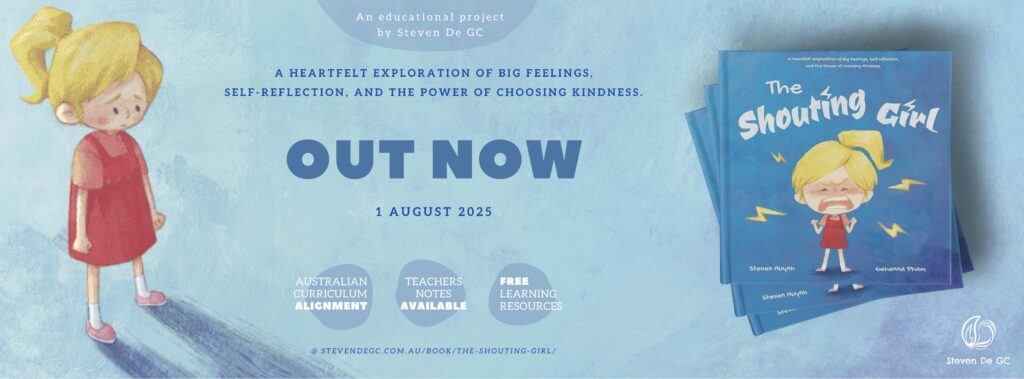
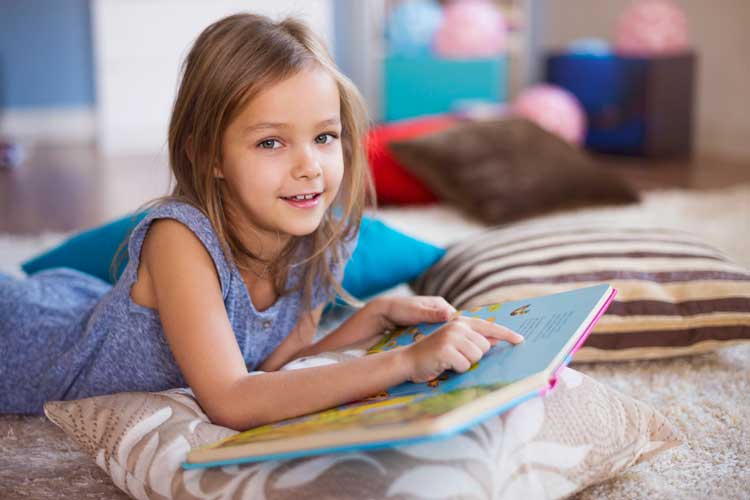

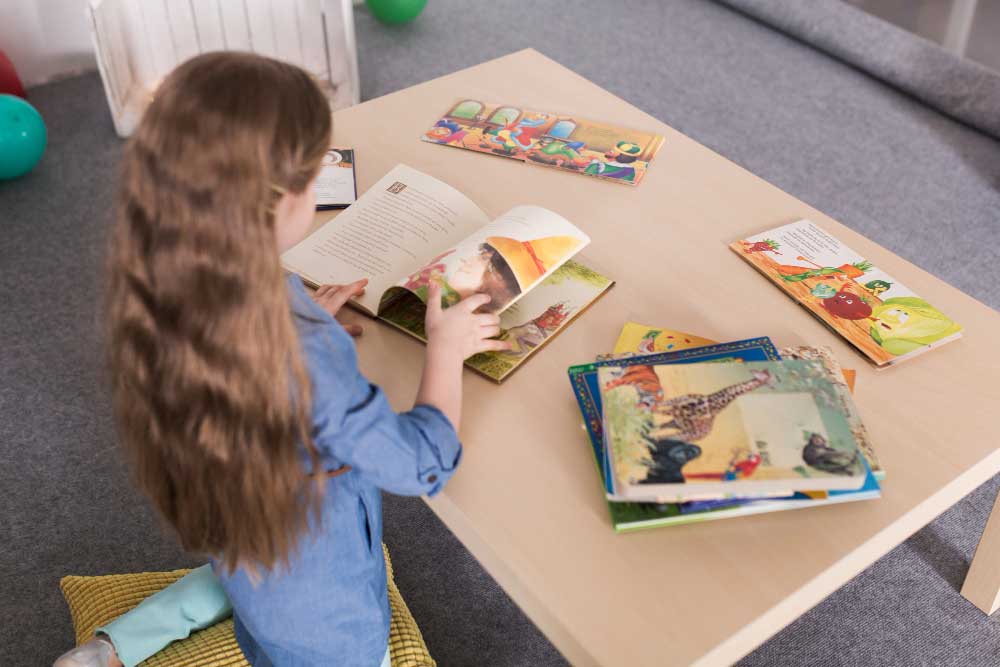

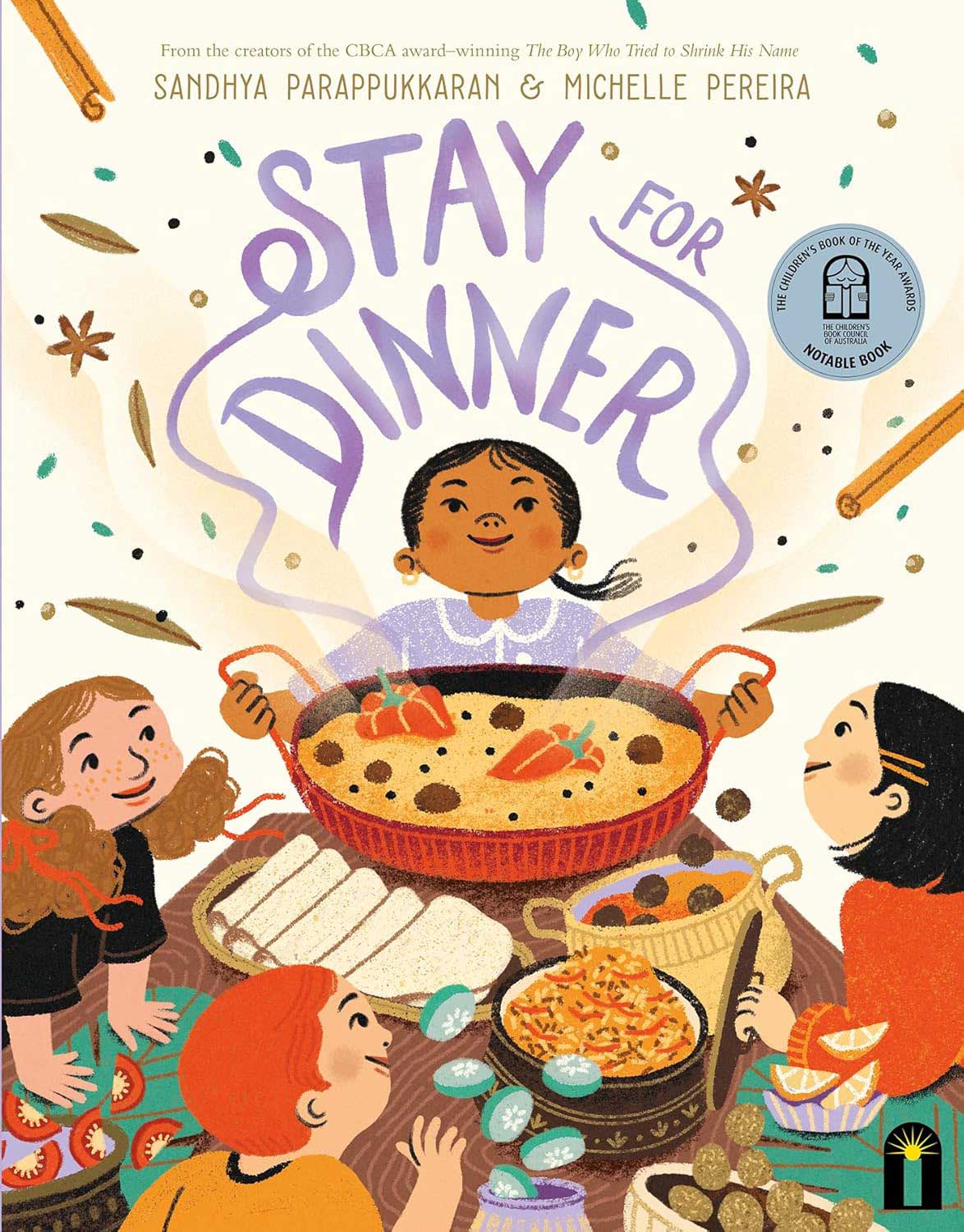
![[T4R] Stay For Dinner: L10 Evaluation](https://stevendegc.com.au/wp-content/uploads/2025/02/T4R-Stay-For-Dinner-L10-Cover.jpg)
![[T4R] Stay For Dinner: L9 Summarising](https://stevendegc.com.au/wp-content/uploads/2025/02/T4R-Stay-For-Dinner-L9-Cover.jpg)
![[T4R] Stay For Dinner: L8 Respectful Relationships](https://stevendegc.com.au/wp-content/uploads/2025/02/T4R-Stay-For-Dinner-L8-Cover.jpg)
![[T4R] Stay For Dinner: L7 Cultural Respect](https://stevendegc.com.au/wp-content/uploads/2025/02/T4R-Stay-For-Dinner-L7-Cover.jpg)
![[T4R] Stay For Dinner: L6 The Message](https://stevendegc.com.au/wp-content/uploads/2025/02/T4R-Stay-For-Dinner-L6-Cover.jpg)
![[T4R] Stay For Dinner: L5 Vocabulary](https://stevendegc.com.au/wp-content/uploads/2025/02/T4R-Stay-For-Dinner-L5-Cover.jpg)
![[T4R] Stay For Dinner: L4 Literal Retrieval](https://stevendegc.com.au/wp-content/uploads/2025/02/T4R-Stay-For-Dinner-L4-Cover.jpg)
![[T4R] Stay For Dinner: L3 Book Talk](https://stevendegc.com.au/wp-content/uploads/2025/01/T4R-Stay-For-Dinner-L3-Cover.jpg)
![[T4R] Stay For Dinner: L2 Making Predictions](https://stevendegc.com.au/wp-content/uploads/2025/01/T4R-Stay-For-Dinner-L2-Cover-1.jpg)
![[T4R] Stay For Dinner: L1 Background Knowledge](https://stevendegc.com.au/wp-content/uploads/2025/01/T4R-Stay-For-Dinner-L1-Cover-1.jpg)

